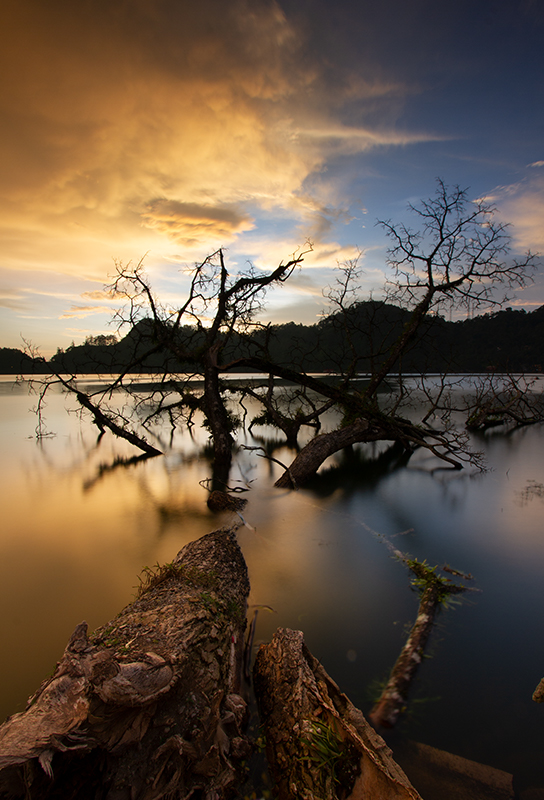Hacks You'll Need When Including Reflection to Your Landscape Shots

EOS R5, RF24-105mm f/4-7.1 IS STM, f/5, ISO 640, 1/4s, 24mm
by @donamtykl
Capturing the reflection of a landscape can be as easy as pointing your camera at the scene and pressing the shutter. Alternatively, you can utilise some of the hacks we’ve outlined below to help you capture an immersive landscape shot of the highest quality.

EOS 7D, EF-S10-22mm f/3.5-4.5 USM, f/13, ISO 100, 25s, 10mm
by @yudha_kp14
Reflecting on Reflections
The first thing you will want to note when looking at a water body is how calm the surface is.
A calm water surface acts almost like a mirror and shows a clear reflection of the scenery. What’s interesting about such reflections is that you can flip the image upside down and create a fun perspective to your shot. You can also use a circular polarizer on your lens to adjust and control the amount of reflection you want on the water’s surface. Sometimes, photographers do this to create a distinction between the reflection and the scenery, or if they wish to show what’s underwater.
What if the water surface is rough with lots of ripples? Well, that may not allow you to capture a clear reflection, but with some simple tips, you can create an artsy picture. By reducing the ISO and shutter speed (use a tripod, or if you are using the EOS R5 or R6, activate the In-body Image Stabilizer to get reduced blur from hand movement), you can blur the water surface and reflection to create a silky-looking effect. If the scene is too bright for you to reduce the shutter speed effectively, you can use a neutral density (ND) filter on the lens to darken the scene.
It’s easy to fall into the trap of shooting the scenery and its reflection at eye level. After all, it’s already that pretty. But the next time you try to capture a reflection of scenery, try to lower your camera to ground level for a fresh perspective. Alternatively, you can also look for high vantage points to capture the scene from another angle for a more interesting shot.
For photographers who want to capture dramatic skies with hues of blue or orange, head to the scenic spot early in the morning or late evening. You might be amply rewarded when these hues are shown in the reflection.

EOS 600D, EF-S18-55mm f/3.5-5.6 IS II, f/9, ISO 320, 1/250s, 18mm
by @theroutecause
Lens Choices
It’s a given that your choice of lens will affect the look of your landscape shot. But do you know the various effects? If the water body is a distance from the actual subject, shooting at different focal lengths can affect the look of the reflection.
Using a wide-angle lens such as the RF15-35mm f/2.8L IS USM or the ultra-wide EF11-24mm f/4L USM will give you an impressive wide frame of the scene. But the caveat with a wide-angle lens is that certain elements, such as mountains, may look smaller in a wide-angle lens, especially if they are further away from you. In such cases, you can consider using a mid-focal range lens such as the RF50mm f/1.8 STM or a zoom lens with a telephoto reach, like the RF24-105mm f/4L IS USM. By doing so, you can ‘draw’ more distant elements closer to you within the frame.
But before you whip out your telephoto lens for your landscape shot with reflections, check your surroundings for sufficient space to manoeuvre. Remember that you need to frame the reflection within the shot too.

EOS 760D, EF24-70mm f/2.8L USM, f/9, ISO 100, 1/3200s, 43mm
by @Little_wonder_photography
Beyond Water Bodies
While it’s tempting to just seek out water bodies for that perfect reflection shot, alternative surfaces can also reflect the landscape worthy of creating an interesting picture.
A metallic surface such as the roof of a car can provide a nice surface to capture an interesting reflection of the landscape. The curves and colour of the roof can accentuate the reflection and draw the viewer’s eye.
Puddles on the ground can act as a reflective surface to show the portion of the landscape you’re capturing. Remember that sometimes less is more. You may not need to show the entire landscape in the reflection. Move around the puddle and find an interesting angle that showcases the most interesting part of the scene to make the shot.
Did you know that most of us are carrying a reflective surface with us most of the time? Your mobile phone’s screen is highly reflective, and by holding it in front of your camera, you can angle the screen to get a clear reflection of the landscape.
The next time you try to take a landscape shot with reflections, remember these pointers that can help you create a more interesting photo. Experiment with different focal lengths and camera settings while keeping a keen eye on your surroundings to see what else you can use as a reflection.
For similar articles:
Dreamy Landscapes: An Interview with Shirley Wung
2 Landscape Photography Tricks to Transform Your Images On The Spot
Telephoto Landscapes: Contrasting Stillness with Movement

































